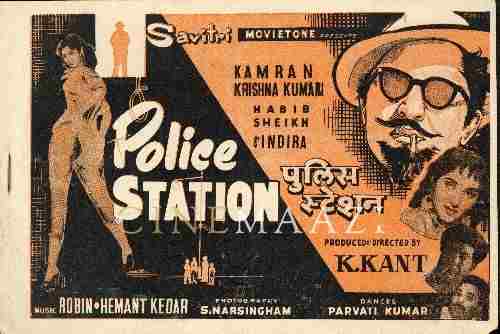Ezra Mir
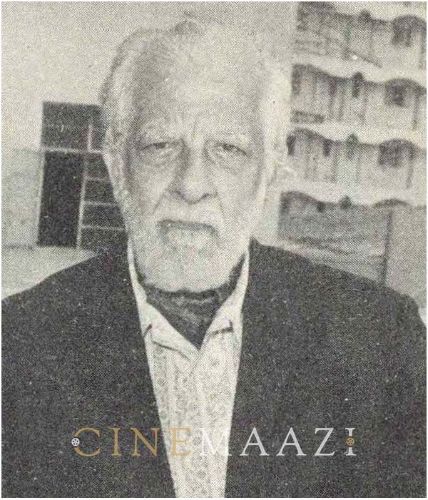
- Real Name: Edwyn Meyers
- Born: 26 October 1902 (Calcutta, British In)
- Died: 7 March 1993 (Bombay)
- Primary Cinema: Hindi
- Parents: Leah Meyers and Moses Solomon Meyers
Changing his original Jewish birth name Edwyn Meyers (as it was felt to lack ‘Indianness’) to Ezra Mir, this noted doyen of documentary film production in India produced more than 300 documentary films in the course of his long and successful career. Born into a reputed Jewish family of Calcutta, he was originally a stage actor. Moving to the US in 1924, to first work as an actor and later, as an editor, it was during this period that he also made his first short film, The Symbolesque (1929). After gaining experience in different facets of film production, he returned to India, where he got busy with the production of a series of feature films. He would make full length feature films based on Hindi theatre, directing the film Noor Jahan (1931), and subsequently Zarina (1932) and other films for Sagar Movietone, Madan Theatres and Ranjit Movietone. In 1939, he set up his own studio named Everest Pictures. Joining the film advisory board during the 1940s, he began making documentary films. Three notable shorts he made for them were Making Money, The Road To Victory and The Voice of Satan in 1940. The Road To Victory was about the proclamation of dictatorship and was effectively directed and narrated by Mir. Voice of Satan was a two-reeler about the propaganda used by the Germans in their broadcasting methods. Both the war documentaries were a production of Wadia Movietone, a co-operative effort with the Film Advisory Board. When the advisory board was replaced by Information Films of India, Mir continued to work for them, producing newsreels such as Indian News Parade. After the war, he continued documentary work, founding the Indian Documentary Producers Association in 1956, and working on over 700 documentary films. He was appointed chief producer of the ministry of information's Films Division in 1956. Under his management, the Division made over 100 documentary films per year. He was awarded the Padma Shri in 1970.
Born Edwin Meyers in Calcutta on 26 October 1902, he was the youngest of four children born to Leah Meyers and Moses Solomon Meyers, a respectable Jewish family of Calcutta. His interest in films was piqued in his early years when, as a boy, he used to walk up to the front gate of the family home and wait for the slide show presented by the street bioscope man on themes like ‘Dilli Dekho, Bambai Dekho’, for the fee of one anna.
He also developed an interest in painting and allied arts, music, drama, reading and metaphysics. Watching silent movies featuring Charlie Chaplin, Buster Keeton, Laurel and Hardy exhibited by the Elphinstone Bioscope Company in a nearby tent cinema, his dream of travelling to America, the centre of films, first took root.
On completing his education at the reputed St Xavier’s College, Calcutta, his father found him a job as an apprentice to a well-known accountant working with the business house of which he was the general manager. However, even as he realised he had neither the head nor the inclination for an accountant’s job, his love for the world of cinema kept increasing.
In order to generate funds to reach America, the land of his dreams, he gave lessons in oil painting. He also landed a few part-time assignments with Madan Film Company of Calcutta as an actor, debuting in in a film entitled Matru Sneha (1922). It was followed by the historical film Nurjehan (1923) in which his role as Prince Khushroo, son of Emperor Jahangir, won him attention. At Madan, he got the opportunity to get involved in various branches of filmmaking, which would later stand him in good stead.
Interestingly, a St Leger sweepstakes ticket he had purchased won him a grand prize of Rs8,000. This lucky strike enabled him to purchase a ticket to sail for America in 1923. During a brief stopover in London, he also gained ideas about writing from the screen from his cousin there. In New York, he came to be known as a charming young man from the faraway land of India famed for its nawabs and maharajas. His passion for the film medium saw him land a small role in a Rudolph Valentino film. He was also engaged by a film producer to conduct classes in film acting at the New York School of Dramatics. During his six-month stay in New York, he got busy doing odd jobs at script writing and preparing synopses of plays and novels for the First National Biograph Studios. It helped him gain valuable experience in story and script writing.
His heart set on Hollywood, he moved to Los Angeles, and went on to be signed on by producer Charlie Rosenfeld, whom he had previously met in New York, to write the story for a Western cowboy film. He not only received $75 for the story but also opportunities to be on the sets, watching and learning how films got made in Hollywood.
Through the good offices of the Rosenfelds, in early 1925 he gained an introduction to the chief editor at the Universal Pictures Corporation, and managed to get his first break as an assistant editor in the cutting department at the major studio. Starting off with the editing of short films, he soon got the chance to edit feature films like The Ice Flood (1926) directed by George B Seitz and Uncle Tom's Cabin (1927) directed by Harry Pollard.
His enterprising spirit saw him build a connection with Carl Laemmle, the president of Universal, who sanctioned his transfer to the prestigious story writing department of the studio. Working at Universal for two years as a staff scenario writer, he was associated with the scripting work on the roles for Reynold Denny, Laura La Platte, Hoot Gibson, Mary Philbin, etc. Post this experience, he took to freelancing with various independent studios as story writer, gagman, assistant director, etc. He also penned The Million Dollar Sap which was produced by Tec Art Studios featuring Alberta Vaughan and William Collier. Next he worked on Confirmed Bachelors, Prince of Hearts, and Shackles of Vengeance.
By 1926, he had emerged as a well-known Indian writer of screen stories in Hollywood, the Mecca of the film world. Working with United Artistes producer Edwin Carewe, he was engaged as chief of the scenario department of the Dolores Del Rio unit of United Artistes. It was at Carewe’s suggestion that he also changed his name from the more common Edwyn Meyers, to Ezra Mir, Ezra having been one of his childhood aliases.
At the close of his assignment with United Artistes, Mir wrote and directed for an independent producer an unusual featurette, Symbolesque. The film created a sensation in the art circles of Hollywood, winning acclaim as a masterpiece of film art and craftsmanship. The Hollywood Filmograph, a leading Hollywood magazine, praised him in an article titled ‘Ezra Mir is India’s sole contribution to American Films’.
After seven years of working in Hollywood, Mir chose to return to his homeland, sailing back in 1930 to his family in Calcutta. Before he could fructify his plans to produce a film with Indian characters for the American marked, he was approached by the famous filmmaker, Ardeshir Irani to join the Imperial Film Company of Bombay for Noor Jahan (1931), a grand presentation of the story of the legendary empress and her romance with Emperor Jehangir. Most of the scenes were shot on location, in the historic cities of Delhi, Agra, Lahore, as well as the desert region. Originally completed as a silent movie in 1930, around the time India’s first talkie, Alam Ara (1931) had appeared on the screen, Noor Jahan was re-shot in parts with dialogues and released as the second talkie ever produced in India. It had an all-star cast of Mazhar Khan, Jamshedjee, Jilloo, Nayampally, Mubarak, and Vimla among others.
Mir would later recall that Noor Jahan was unique in another sense: It was the first film produced in India with a proper shooting script, complete with a shot by shot description of scenes, sets and dialogues written out in advance. Credit for all this clearly went to Mir himself.
In early 1932, he joined Sagar Movietone, Bombay, for whom he wrote and directed Zarina (1932) featuring Zubeida, Jal Merchant, Nayampally and Yakub. It would be the earliest film on the Indian screen to portray a kissing scene. Next, he scripted and directed for Sagar Movietone the comedy Premi Pagal (1933) featuring the well-known comedian of the time - Charlie. He would thereafter script and direct Sagar Movietone’s Phantom of the Hills (1934) starring Jal Merchant, Sabita Devi, Nayampally, Yakub and the comedian Charlie.
After a productive two-year stint with Sagar Movietone completing three full-length feature films, Mir was drawn back to Calcutta to his folks at home as well as his first employer Madan Theatres. From 1934 to 1936, he wrote and directed five full-length feature films, namely Mera Pyara (1935), Rashida (1935), Jeevan Sangram (1936), Devil’s Dice/ Shaitan Ka Pash (1936) and Parivartan (1936). The popular stars of the day like Jahanara Begum, Kajjan, Yusuf Effendi and Mohammad Hussain featured in these Mir directorials.
His survey and study tour of film studios in Britain and the continent in 1936, proved to be an educative experience for him, and also boosted his standing as a director of stature. Thereafter, drawn to the premier Indian film world of Bombay, he signed a contract with Chandulal Shah of Ranjit Studios to direct the feature film Rikshawalla/ Bhola Raja (1938). Based on Kidar Sharma’s story, it became a box-office hit.
By the end of the same year, Mir became the chief associate in an independent venture, The Everest Picture Corporation of Bombay. The company’s maiden production titled Sitara (1938), a story of the gypsy world, was acclaimed as Mir’s best feature film thus far. It starred Rattan Bai, Khurshid Begum, Nazir, Mubarak, Jamshedji and K N Singh.
The following year was to be an important landmark in Mir’s career. Influenced by the audio-visual medium of the documentary film, as well as the noteworthy contributions of pioneers such as Robert Flaherty, John Grierson, Paul Rotha and Eisenstein, as well as the new dimension the movement received during World War II, Mir was drawn strongly to the medium. As he would later explain in the book The World of Ezra Mir, “My shift to the documentary film making came in the War years when I was greatly inspired by the documentary serial The March of Time produced in the USA. Convinced that it would be wonderful to make such films on India and its varied problems, I approached Universal Studios and Fox Movietone to send me stockshots from their collection. Using these stockshots I produced Road to Victory which was the first documentary film ever produced in India. I invited Sir Roger Lumley, the governor of Bombay, to inaugurate the film which was well received. It would not be an exaggeration to say that it was the success of this first documentary that inspired the then government of India to invite Alexander Shaw, a renowned documentary filmmaker from the UK to come to India and set up a documentary film unit in India. This was the beginning of the Information Films of India (IFI), the forerunner of the Films Division. Invited by the government, I joined this unit and got busy scripting, directing and editing several documentaries like The Voice of Satan, Whispering Legions, to name a few.”
Working as associate producer of the Information Films of India, after Alexander Shaw left, Mir was appointed by the government of India as the producer-in-charge. During his five years at IFI till 1946, he produced over 175 documentary films, which were noted for offering entertainment as well as conveying information and invariably a salutary message. His work was commendable, especially The Voice of Satan, Whispering Legions, and The Tree of Wealth which won many international awards, as well as the Our Heritage series of films which presented the monuments and other facets of the cultural heritage of India. This repertoire of excellent films established Mir as the doyen of documentary films in India, in the tradition of the internationally renowned luminaries of the world of documentary films in the west.
With the government of India preparing for the transfer of power with the country’s impending Independence, IFI, which had been set up by the British, was also dissolved. Around this time, Mir was commissioned by Awaz Film Corporation of Bombay to produce and direct the feature film Beete Din (1947), starring Motilal, Vanmala, Sheila, Shyama and other stars.
Proceeding on a survey and study tour of British and Continental studios, Mir returned to engage with producing documentaries and short films on tourism. He did so from 1949-1951 , as an independent film producer under the banner India Film Enterprises.
In 1954, he would direct one of his most fulfilling films – Pamposh meaning lotus flower. Working with producer Ambalal J Patel and cameraman Carlos Marconi on location in Kashmir, he created a film of idyllic beauty, centred on the Dal Lake. It featured an innocent, sensitive child, Mogli, under the care and protection of her uncle. An outstanding success, Pamposh was also released abroad in an English version, and was also presented at the prestigious Cannes film festival in 1954 where it won considerable acclaim.
In newly independent India, the government realised the merit in reviving an organisation for the production and distribution of documentary and short films. Modelled on IFI but geared to fulfill the needs of new India, Films Division was born in 1948. In 1956, Mir was invited to take over as chief producer of the organisation, and he would become fully involved with the production of documentary films.
He was the unanimous choice for the post of president, Indian Documentary Producers’ Association, holding the position till 1956 when he was chosen by the government of India to take over as producer-in-charge, followed by chief producer of the Films Division. Taking up this challenging task in earnest, Mir guided the activities of the Films Division, producing, with the able support of S L Badami, one newsreel a week and organising a phalanx of directors and cameramen to produce and release an average of one documentary every week.
During the five years that Mir was chief producer at Films Division till 1961, more than 300 documentary films on various facets of Indian life and thought were produced, besides the newsreels. A dedicated producer, he was personally involved with the production of almost all these films right from their conception to their completion, guiding the script-writers, directors and cameramen, and associating himself with the editing of the films, and often writing and even providing the commentary.
The documentary films he produced during this period are broadly classified into the categories of Art and Experimental Films; Biography and Personality films; Classroom and Children’s films; Education, Instructional and Motivational films; Export and Tourist Promotion films; Feature Length and Feature Type films; The Visit films; and The films in Retrospect. Many of these films were exhibited at various international film festivals, regularly winning awards and diplomas. Memorable productions include Our Southern Neighbours, Kathakali, Our Prime Minister, Cripps’ Mission, Queen Elizabeth’s Visit to India, The Quest for Peace and Jugal bandhi.
Thereafter, he was invited by the state department of the US government to tour the country as a participant of the foreign specialists’ programme, which was a great success.
Mir was thereafter appointed as producer-in-charge of the Children’s Film Society where he served from 1962 to 1964, producing a series of children’s films notable among which was Raju Aur Gangaram (The Boy and the Parrot), a prize-winning film, based on a story written by Mir himself.
On completion of his tenure, he was invited to Canada to represent India and serve as one of the members of the jury at the 8th International Film Festival held at Vancouver in 1965.
Invited to serve as a member of the Gandhi Films Committee, he directed prestigious films for the same, including the film on Mani Bhavan.
In 1970, Mir was awarded the Padma Shri for his pioneering work in the production of newsreels, documentaries and educational films in India, as well as his enormous and diverse experience in the field.
In March 1990, he was honoured by the Bombay International Film Festival for Documentaries and Short Films, as the oldest living documentary filmmaker of India. The governor of Maharashtra observed that there was much one could learn from Mir, such as his innovative style, creativity and his dedication to filmmaking.
A multi-faceted personality, Mir’s interests were not confined to the film world alone. An avid painter, he was also a consummate story writer with more than 20 stories to his credit (besides the stories of the films he produced), and also composed several poems many of which appeared in Indian and foreign journals.
Mir had never married. An adolescent attraction had drawn to a close when the object of his affection left for America. Meeting her again years later while in the US, the romance of his youthful days could not be revived as he had, by then, become wedded to his first and last love – cinema.
Surgeries Mir had undergone in the sunset of his life affected his physical mobility and confined him to his house. However, he remained mentally alert and would share with happiness and precision his experiences in filmmaking and was also known to regale his friends and admirers with old favourite songs rendered in his admirable baritone.
Mir passed away on 7 March 1993 in Bombay.
References
The World of Ezra Mir By N J Kamath
https://archive.org/details/worldofezramirmo00kama/page/20/mode/2up
https://www.bengalfilmarchive.com/new-documentary-3.php?i=MjM=
-
Filmography (4)
SortRole
-
Sitara 1938
-
Phantom of the Hills 1934
-
Zarina 1932
-
Noorjehan 1931
-



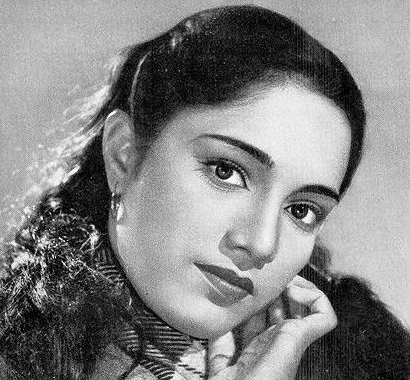
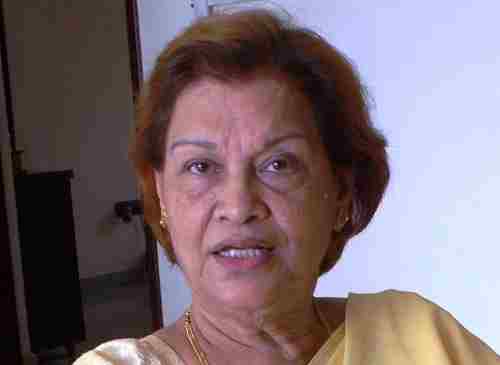
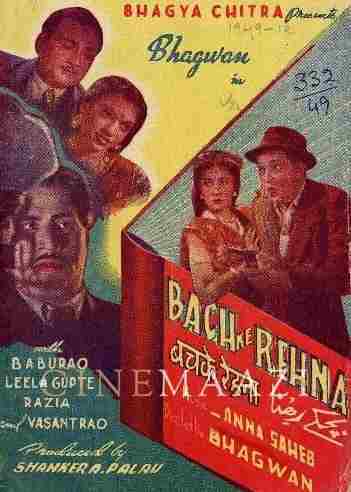
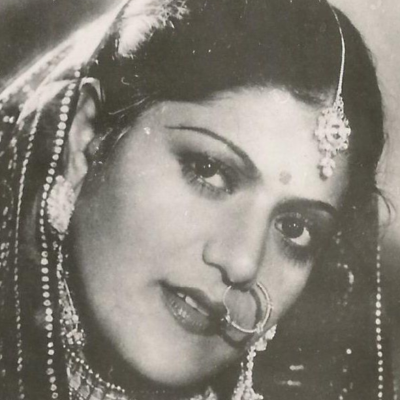

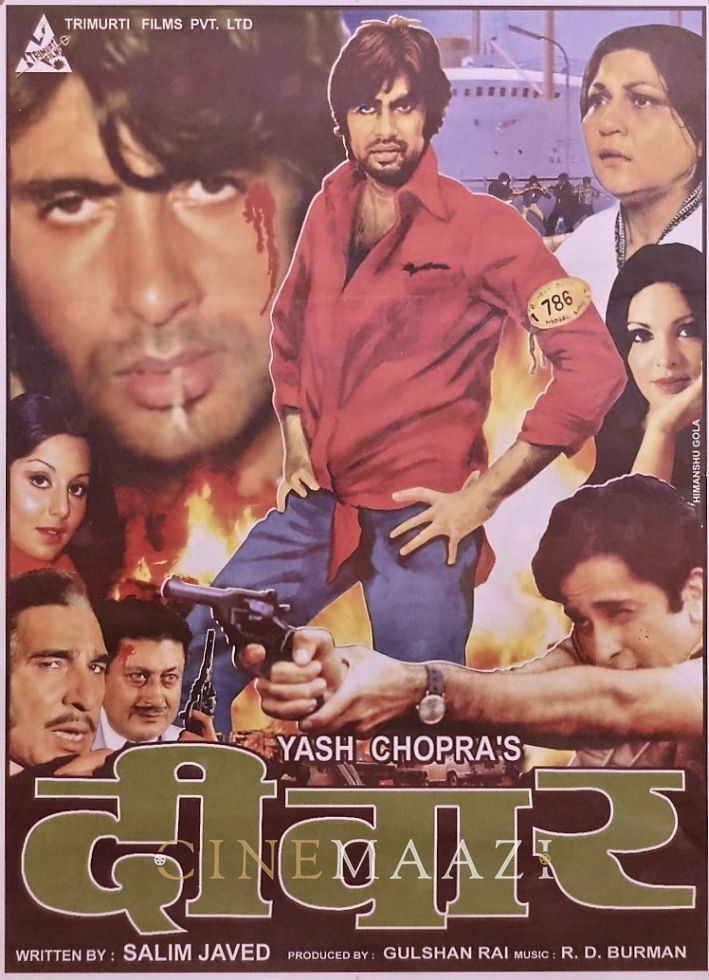
.jpg)

